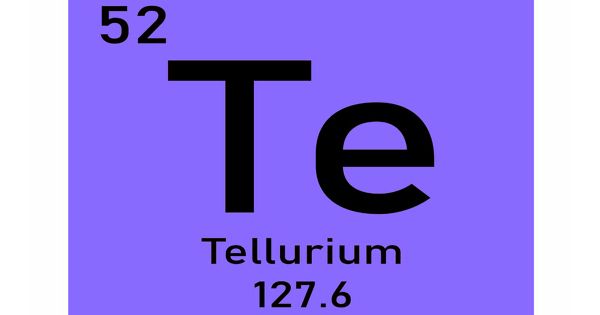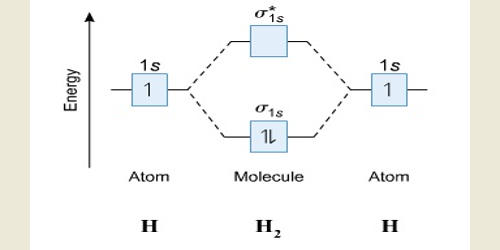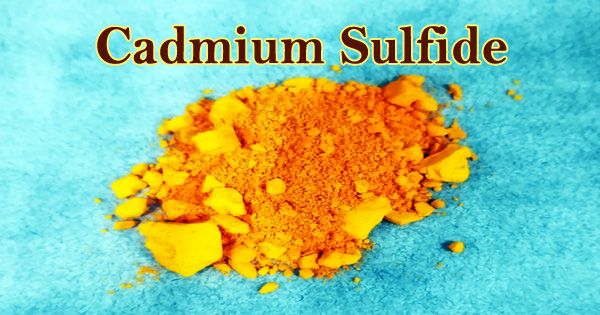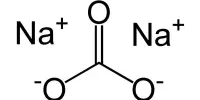Tellurium is a semimetallic, lustrous, crystalline, brittle, silver-white element. It is a chemical element with the symbol Te and atomic number 52. It is usually available as a dark grey powder, it has the properties both of metals and non-metals. It is a brittle, mildly toxic, rare, silver-white metalloid. It is unaffected by water or hydrochloric acid but dissolves in nitric acid.
Tellurium is chemically related to selenium and sulfur, all three of which are chalcogens. It forms many compounds corresponding to those of sulfur and selenium. It is occasionally found in native form as elemental crystals. It is very toxic and teratogenic. Workers exposed to very small quantities of tellurium in the air develop ‘tellurium breath’, which has a garlic-like odour.
Tellurium is an element with the atomic symbol Te, atomic number 52, and atomic weight 127.6. It is a silvery-white semi-metallic element that is crystalline and brittle.
Properties
- Atomic number: 52
- Atomic mass: 127.6 g.mol-1
- Electronegativity according to Pauling: 2.1
- Density: 6.24 g.cm-3
- Melting point: 450 °C
- Boiling point: 988 °C
- Vanderwaals radius: 0.137 nm
- Isotopes: 23
Tellurium is a grayish-white solid with a shiny surface. It has a melting point of 449.8°C (841.6°F) and a boiling point of 989.9°C (1,814°F). Tellurium-bearing compounds were first discovered in 1782 in a gold mine in Kleinschlatten, Transylvania (now Zlatna, Romania) by Austrian mineralogist Franz-Joseph Müller von Reichenstein, although it was Martin Heinrich Klaproth who named the new element in 1798 after the Latin word for “earth”, tellus.
The most common use of tellurium today is in specialized alloys. An alloy is made by melting and mixing two or more metals. Gold telluride minerals are the most notable natural gold compounds.
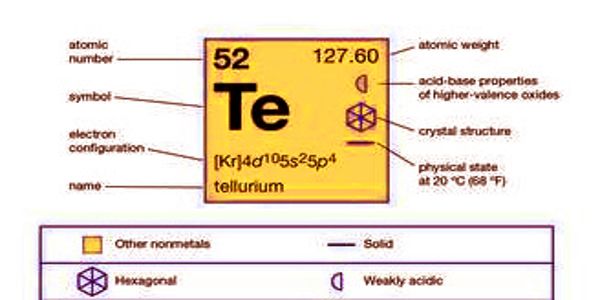
Occurrences
Tellurium is one of the rarest elements in the Earth’s crust. It is a silvery white element with properties intermediate between those of metals and nonmetals; it makes up approximately one part per billion of Earth’s crust. It is far more common in the Universe as a whole than on Earth. Its extreme rarity in the Earth’s crust, comparable to that of platinum, is due partly to its formation of a volatile hydride that caused tellurium to be lost to space as a gas during the hot nebular formation of Earth. Tellurium is obtained commercially today as a by-product in copper and lead refining.
Uses
Commercially, the primary use of tellurium is copper (tellurium copper) and steel alloys, where it improves machinability. It is added to lead to improve its durability, strenght and resistence to corrosion.
Applications in CdTe solar panels and cadmium telluride semiconductors also consume a considerable portion of tellurium production. It can be used for cast iron, ceramics, blasting caps, solar panels, chalcogenide glasses.
Tellurium is considered a technology-critical element. When added to rubber, tellurium speeds up the curing process and makes the product less susceptible to ageing and less likely to be affected by oil, which softens normal rubber.
Information Source:
